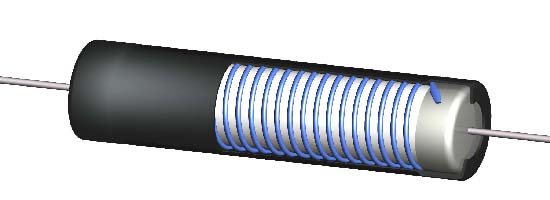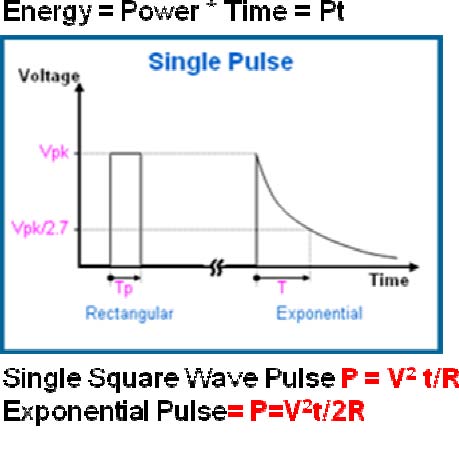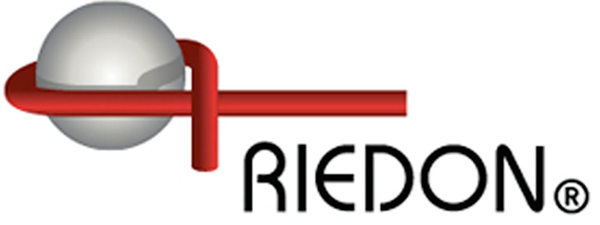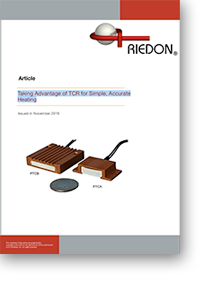High Pulse Resistors
Resistors used in modern electronics often experience transients (e.g. lightning strike) or pulse loads (e.g. inrush current), and their ability to survive and operate properly in these applications is a critical issue.
For most applications, wirewound resistors provide the very best capability in these conditions, outperforming other resistor technologies. Making the proper component choice is often difficult as resistor manufacturers seldom provide reliable pulse and transient information in their datasheets. Riedon prefers to work with our customers to optimize our standard resistors to meet your requirement.
Wirewound resistor basics
The drawing shows the typical construction of a Riedon wire wound resistor. Steel end caps are pressed on to a ceramic core. Resistance wire is wound around the core, and the ends are welded to the caps. The assembly is encapsulated to protect it from moisture and physical damage.

The resistance value is determined by three variables: the wire's length, diameter, and resistivity. The pulse rating is directly proportional to the mass of the resistance winding, so it is determined by the same three variables. It is important to emphasize that we can optimize the pulse rating for your specific application by adjusting these three variables.
How Riedon determines the transient energy our resistors can tolerate?
For long pulses up to of 5 seconds, Riedon's wire wound resistors are designed to meet the industry-standard specification of 5 times rated power for 5 seconds. This applies to all values and all resistances. For example, a 5W resistor can handle 25W for 5 seconds (125 Joules) regardless of package size or resistance value.

For applications involving short pulses less than 10ms, Riedon calculates the mass of the resistance wire on the part to determine how much energy that mass can absorb without failing. Unlike the standard overload specification, these calculations are specific to a certain resistance value and size.
Riedon's Pulse Rating
Our pulse rating assumes the pulse is of short duration and all the energy is going into the resistance wire, and doesn't take into account energy dissipated into the rest of the resistor. For longer pulses, heat is transferred to the surrounding materials, so the energy absorbed can be much higher than the value given. The following assumptions are made:
- 1.Short duration pulse (< 10mSec)
- 2.Energy calculation is for a single pulse
- 3.No energy is absorbed by the coating material and core, it is purely adiabatic.
- 4.Temperature of the resistance material is 25&176;C before pulse, and 450&176;C after the pulse.(This gives a 50% safety factor on the pulse rating to account for manufacturing variances.)
Why we don't publish ratings?
Riedon has avoided including detail transient and pulse engineering data for our catalog resistor products. By optimizing our standard designs, we can usually exceed the published ratings of other suppliers as they are generally conservative and do not reflect the optimum pulse rating that a particular size can achieve.
These Parameters are needed to determine the Joule rating you need:
|
Ø Resistance Value Ø Pulse o Duration (ms) o Shape – Square, triangular or irregular o Single or Repetitive o Peak Power (W)/current(A)/voltage(V) Ø Package Type o Axial or Surface mount o Maximum dimension
|
Our engineers have access to over 50 years of experience with wirewound resistors - take advantage of that background. Contact us when your design depends on an accurate determination of the transient or pulse capability of a resistor. We will work with you to optimize the pulse rating you need.





